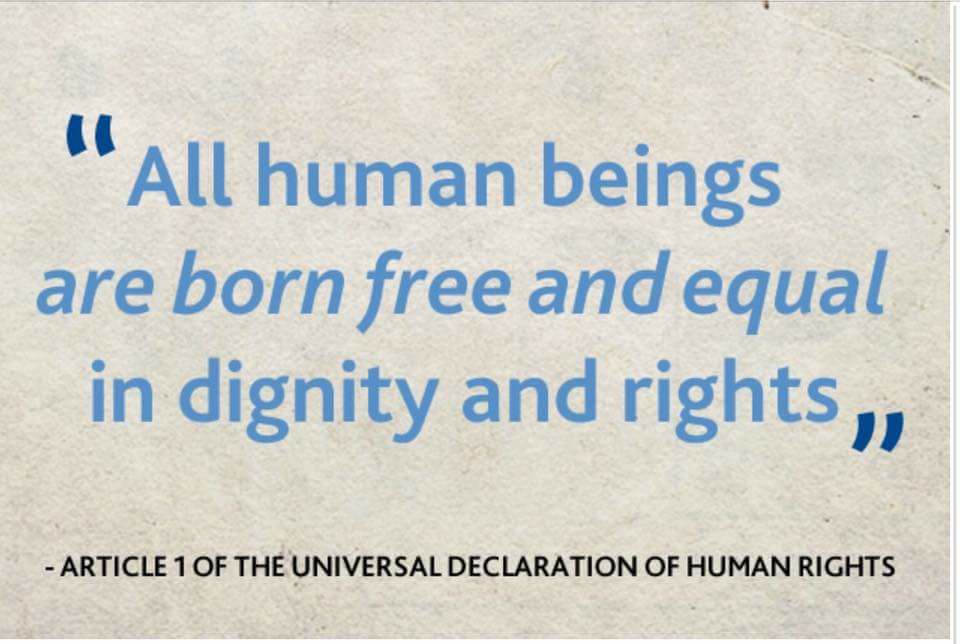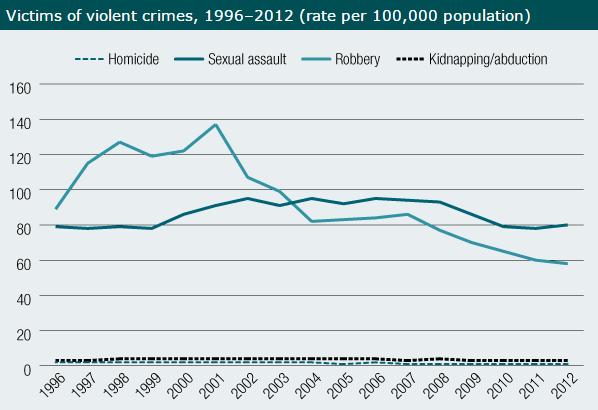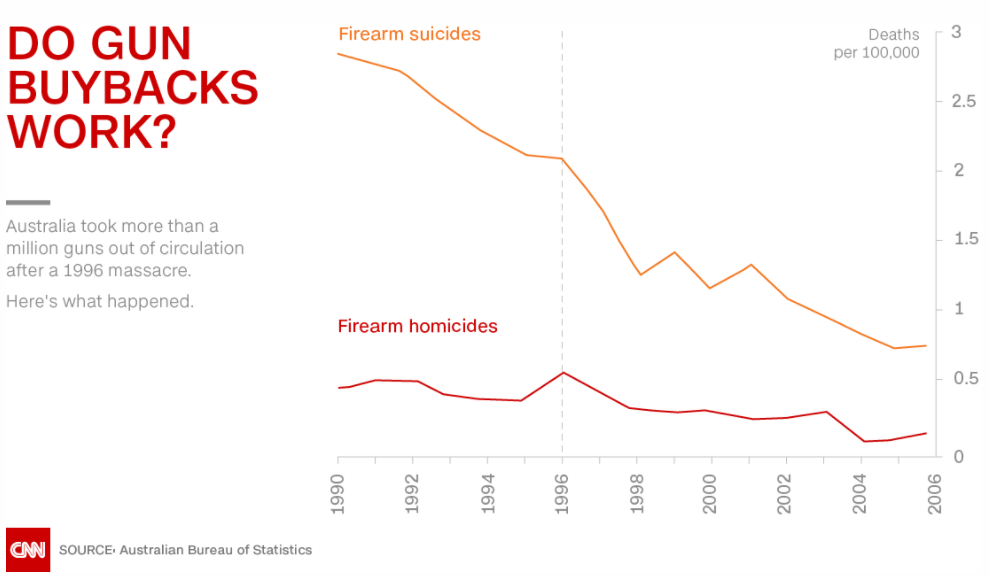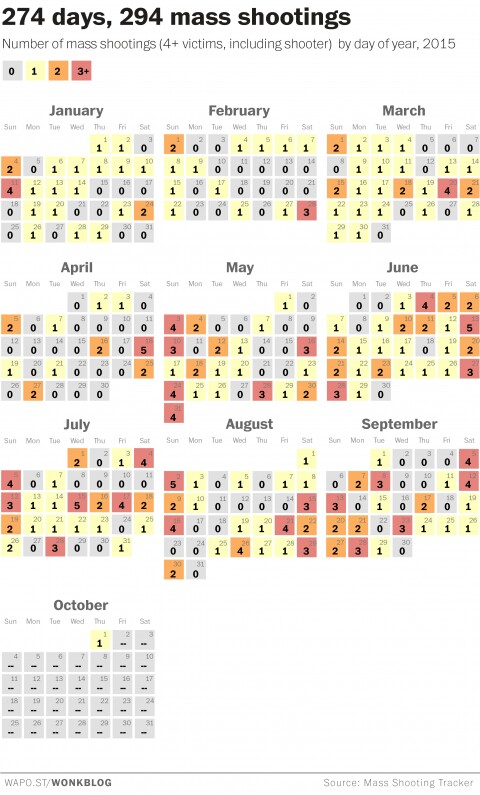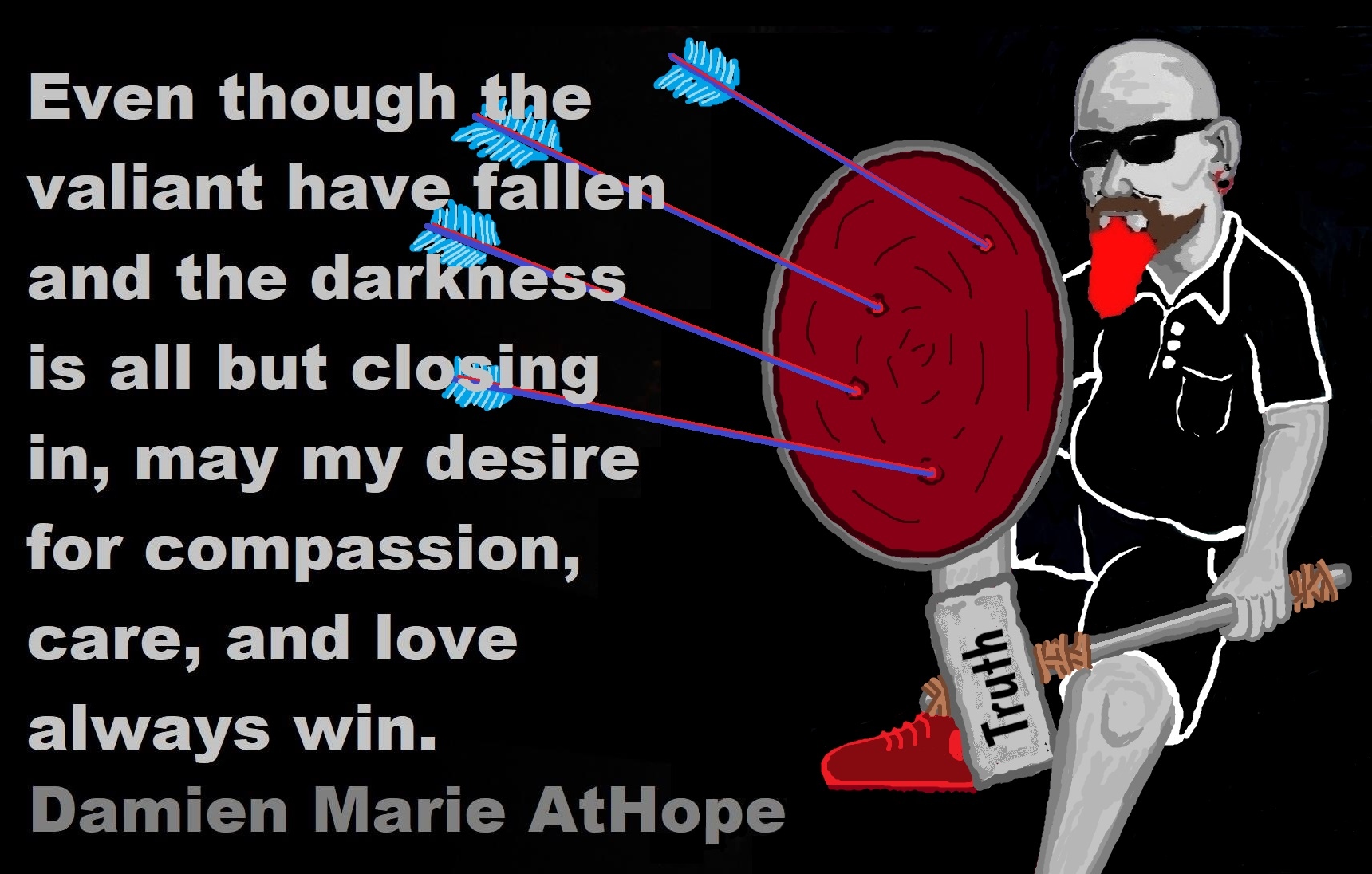I am for Non-Aggression?
I am not a pacifist, rather I am for non-aggression, I will engage in or support violence if it is direct self-defense or for other-defense.
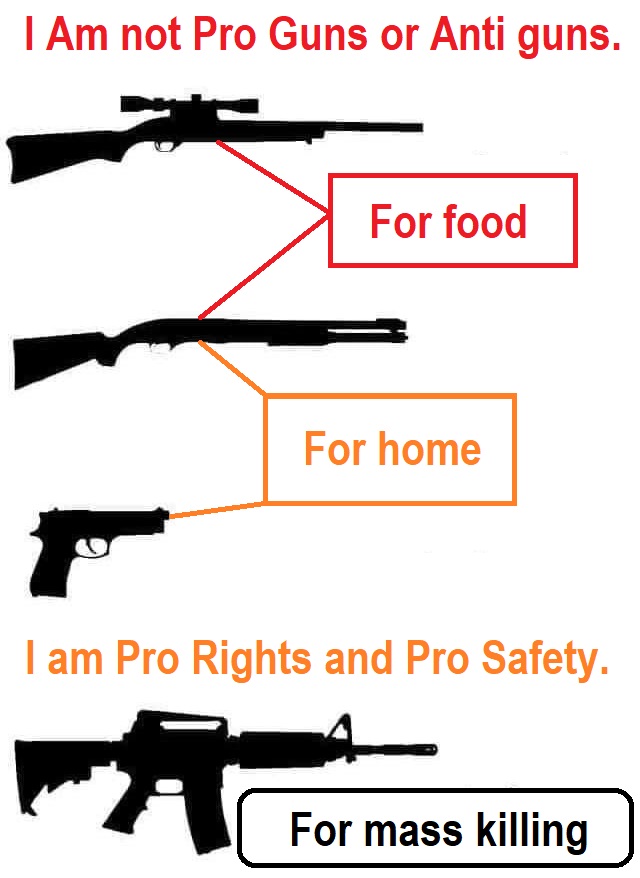
So many think a gun of war is needed to change things but look at the many uprisings around the world bringing change that guns are not used. I am for non-aggression, I am one who champions nonviolent actions, and activism to inspire change. We are more powerful than we realize. I am a far leftist and I don’t own any guns and am for reasonable gun rights and reasonable gun laws.

“Damien, aren’t you an anarchist?” – Communist
My response, Yes, and I am for reasonable rules, not rulers. I support reasonable gun laws. I am for car laws as well for the same reason, safety.
“But you still have rulers why give up your means of self-defense when the threat is still present?” – Communist
My response, I don’t own a gun, I did in the past when I was a rightist but now as a leftist, I don’t feel it necessary.
“Then you’re a liberal, not a leftist. We’re still oppressed, so long as the capitalists rule and the state remains.” – Communist
My response, So if I am not for all people having access to a type of gun but not all guns then one is not a leftist? Give me a break. lol
“Keep it to one message, and no what makes you, not a leftist is your content in your oppression. Anarchists used to assassinate monarchies and now you are protesting for a policy that directly fucks your cause. Read theory on either ideology anarchism isn’t just No government.” – Communist
My response, Is it being disarmed if I can’t have bombs and grenades? If I was OK with laws against walking around with bombs would this make me not a leftist? What if I wanted to have nuclear weapons at my home if others wanted laws against this world, they be, not leftist?
“You’re moving the goalposts, we’re dealing with guns, not world-ending devices.” – Communist
My response, As to my politics, when I take political tests I am listed as close to anarchist communist and I will trust it over your opinions.
“You trust a political compass, really? Have you read any political theory anarchist or otherwise? Wanting laws isn’t anti-leftist, but advocating for laws that restrict your access to your most direct line of democracy. Yeah I think that’s not leftist.” – Communist
“It seems like America is the only country on earth with the worst gun control laws in terms of keeping everyone safe.” – Marxist-Leninist, Atheist, No war but class war
“Communism (from Latin communis, ‘common, universal’) is a left-wing to far-left sociopolitical, philosophical, and economic ideology within the socialist movement, whose goal is the establishment of a communist society, a socioeconomic order centered around common ownership of the means of production, distribution, and exchange that allocates products to everyone in the society. Communist society also involves the absence of private property, social classes, money, and the state. Communists often seek a voluntary state of self-governance but disagree on the means to this end. This reflects a distinction between a more libertarian approach of communization, revolutionary spontaneity, and workers’ self-management, and a more vanguardist or Communist party-driven approach through the development of a constitutional socialist state followed by the withering away of the state. As one of the main ideologies on the political spectrum, communism is placed on the left-wing alongside socialism, and communist parties and movements have been described as radical left or far left.” ref
“Variants of communism have been developed throughout history, including anarcho-communism, Marxist schools of thought, and religious communism, among others. Communism includes a variety of schools of thought, which broadly include Marxism, Leninism, and libertarian communism, as well as the political ideologies grouped around those. All of these different ideologies generally share the analysis that the current order of society stems from capitalism, its economic system, and mode of production, that in this system there are two major social classes, that the relationship between these two classes is exploitative, and that this situation can only ultimately be resolved through a social revolution. The two classes are the proletariat (the working class), who make up the majority of the population within society and must sell their labor to survive, and the bourgeoisie (the capitalist class), a small minority that derives profit from employing the working class through private ownership of the means of production. According to this analysis, a communist revolution would put the working class in power, and in turn establish common ownership of property, the primary element in the transformation of society towards a communist mode of production.” ref
“Anarchist communism is a political philosophy and anarchist school of thought that advocates communism. It calls for the abolition of private property but retains personal property and collectively-owned items, goods, and services. It supports social ownership of property and the distribution of resources “From each according to his ability, to each according to his needs“. Some forms of anarchist communism, such as insurrectionary anarchism, are strongly influenced by egoism and radical individualism, believing anarchist communism to be the best social system for realizing individual freedom. Most anarchist communists view the philosophy as a way of reconciling the opposition between the individual and society.” ref
I am not, nor do I support “egoism and radical individualism“, I am a pro-collectivist anarchist thinker.
“Collectivist anarchism, also called anarchist collectivism and anarcho-collectivism, is an anarchist school of thought that advocates the abolition of both the state and private ownership of the means of production. In their place, it envisions both the collective ownership of the means of production and the entitlement of workers to the fruits of their own labor, which would be ensured by a societal pact between individuals and collectives. Collectivists considered trade unions to be the means through which to bring about collectivism through a social revolution, where they would form the nucleus for a post-capitalist society.” ref
“The tendency was initially conceived as a synthesis of social equality and liberty, by the Russian revolutionary socialist Mikhail Bakunin. It is commonly associated with the anti-authoritarian sections of the International Workingmen’s Association and the early Spanish anarchist movement, with whom it continued to hold a strong influence until the end of the 19th century. Eventually, it was supplanted as the dominant tendency of anarchism by anarcho-communism, which advocated for the abolition of wages and the distribution of resources “from each according to their ability, to each according to their needs.” ref
Science like logic should follow truth devoid of political or religious/nonreligious beliefs or persuasions.
To me, to do otherwise is to move away from science and thus risks falling into pseudoscience.

“Axiology (from Greek ἀξία, axia: “value, worth”; and -λογία, -logia: “study of”) is the philosophical study of value. It includes questions about the nature and classification of values and about what kinds of things have value. It is intimately connected with various other philosophical fields that crucially depend on the notion of value, like ethics, aesthetics or philosophy of religion. It is also closely related to value theory and meta-ethics.” ref
“Axiology, also called THEORY OF VALUE, the philosophical study of goodness, or value, in the widest sense of these terms. Its significance lies (1) in the considerable expansion that it has given to the meaning of the term value and (2) in the unification that it has provided for the study of a variety of questions—economic, moral, aesthetic, and even logical—that had often been considered in relative isolation.” ref

LeftValues test: Link

8values test: Link
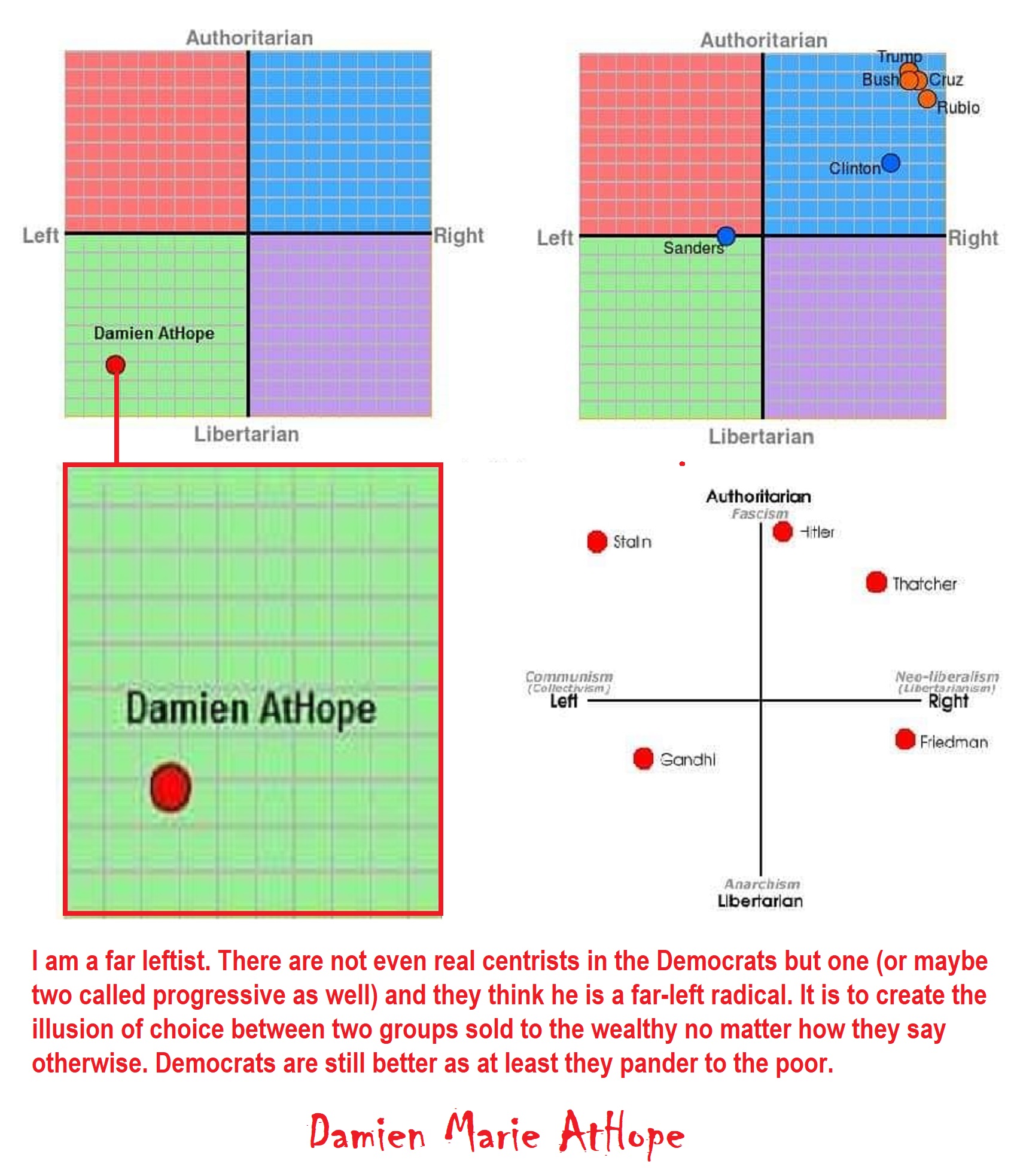
Political compass test: politicalcompass.org/test
I want people to rise up in Nonviolent Resistance/Action for Change,
so I don’t champion revolution by a gun.
“Nonviolent resistance, or nonviolent action, sometimes called civil resistance, is the practice of achieving goals such as social change through symbolic protests, civil disobedience, economic or political noncooperation, satyagraha, constructive program, or other methods, while refraining from violence and the threat of violence. This type of action highlights the desires of an individual or group that feels that something needs to change to improve the current condition of the resisting person or group.” ref
“Nonviolent resistance is often but wrongly taken as synonymous with civil disobedience. Each of these terms—nonviolent resistance and civil disobedience—has different connotations and commitments. Berel Lang argues against the conflation of nonviolent resistance and civil disobedience on the grounds that the necessary conditions for an act instancing civil disobedience are: (1) that the act violates the law, (2) that the act is performed intentionally, and (3) that the actor anticipates and willingly accepts punitive measures made on the part of the state against him in retaliation for the act. Since acts of nonviolent political resistance need not satisfy any of these criteria, Lang argues that the two categories of action cannot be identified with one another.” ref
“Furthermore, civil disobedience is a form of political action which necessarily aims at reform, rather than revolution. Its efforts are typically directed at the disputing of particular laws or groups of laws while conceding the authority of the government responsible for them. In contrast, political acts of nonviolent resistance can have revolutionary ends. According to Lang, civil disobedience need not be nonviolent, although the extent and intensity of the violence is limited by the non-revolutionary intentions of the persons engaging in civil disobedience. Lang argues the violent resistance by citizens being forcibly relocated to detentions, short of the use of lethal violence against representatives of the state, could plausibly count as civil disobedience but could not count as nonviolent resistance.” ref
“Mahatma Gandhi is the most popular figure related to this type of protest; United Nations celebrates Gandhi’s birthday, October 2, as the International Day of Non-Violence. Other prominent advocates include Khan Abdul Ghaffar Khan (affectionately called Bacha Khan), Henry David Thoreau, Etienne de la Boétie, Charles Stewart Parnell, Te Whiti o Rongomai, Tohu Kākahi, Leo Tolstoy, Alice Paul, Martin Luther King Jr., Daniel Berrigan, Philip Berrigan, James Bevel, Václav Havel, Andrei Sakharov, Lech Wałęsa, Gene Sharp, Nelson Mandela, Jose Rizal, and many others. From 1966 to 1999, nonviolent civic resistance played a critical role in fifty of sixty-seven transitions from authoritarianism.” ref
“The “Singing revolution” (1989–1991) in Estonia, Latvia, and Lithuania, led to the three Baltic countries‘ restoration of independence from the Soviet Union in 1991. Recently, nonviolent resistance has led to the Rose Revolution in Georgia. Research shows that non-violent campaigns diffuse spatially. Information on non-violent resistance in one country could significantly affect non-violent activism in other countries.” ref
“Many movements which promote philosophies of nonviolence or pacifism have pragmatically adopted the methods of nonviolent action as an effective way to achieve social or political goals. They employ nonviolent resistance tactics such as: information warfare, picketing, marches, vigils, leafletting, samizdat, magnitizdat, satyagraha, protest art, protest music and poetry, community education and consciousness raising, lobbying, tax resistance, civil disobedience, boycotts or sanctions, legal/diplomatic wrestling, Underground Railroads, principled refusal of awards/honors, and general strikes. Current nonviolent resistance movements include: the Jeans Revolution in Belarus, the Black Lives Matter movement in the United States, the fight of the Cuban dissidents, and internationally the Extinction Rebellion and School Strike for Climate.” ref
“Although nonviolent movements can maintain broader public legitimacy by refraining from violence, some segments of society may perceive protest movements as being more violent than they really are when they disagree with the social goals of the movement. A great deal of work has addressed the factors that lead to violent mobilization, but less attention has been paid to understanding why disputes become violent or nonviolent, comparing these two as strategic choices relative to conventional politics.” ref
“Nonviolent resistance proves a potent weapon“
“When Erica Chenoweth started her predoctoral fellowship at the Belfer Center for Science and International Affairs in 2006, she believed in the strategic logic of armed resistance. She had studied terrorism, civil war, and major revolutions — Russian, French, Algerian, and American — and suspected that only violent force had achieved major social and political change. But then a workshop led her to consider proving that violent resistance was more successful than the nonviolent kind. Since the question had never been addressed systematically, she and colleague Maria J. Stephan began a research project. For the next two years, Chenoweth and Stephan collected data on all violent and nonviolent campaigns from 1900 to 2006 that resulted in the overthrow of a government or in territorial liberation. They created a data set of 323 mass actions. Chenoweth analyzed nearly 160 variables related to success criteria, participant categories, state capacity, and more. The results turned her earlier paradigm on its head — in the aggregate, nonviolent civil resistance was far more effective in producing change. The Weatherhead Center for International Affairs (WCFIA) sat down with Chenoweth, a new faculty associate who returned to the Harvard Kennedy School this year as a professor of public policy, and asked her to explain her findings and share her goals for future research. Chenoweth is also the Susan S. and Kenneth L. Wallach Professor at the Radcliffe Institute for Advanced Study.” ref
I Am not Pro Guns or Anti guns,
I am Pro Rights and Pro Safety.
I am a leftist atheist for Non-Aggression, valuing anti-violence,
unless the aggression or violence is for direct self-defense or other-defense.
Why is it a believed human right to have a gun? One has a right to self-protection, not any means or any tools and such people loudly fight to the death for this product “guns.” However, some of these same people (who believe they are champions human rights) seem oblivious to human life and its inherent rights? Some of these self-claim champions of “human rights for guns which I may remind you is only a product, tend to not think housing (also another product) is a human right, as many die homeless in the street? I would rather be one who fights for human life than a product like guns, and why is it so easy to fight for death when life is clearly in such need?
“I need a nuclear weapon to protect myself from other countries that might do me harm, I should have a right to a nuclear weapon. Humor aside, the U.S.Constitutionn does not say gun ownership is an individual right, but a collective right of citizens under state jurisdiction, this is why we have different gun laws in every state. Essentially the constitution says that you can’t outright ban gun ownership by citizens for a lawful purpose, regulation is permissible. A person is more important than a gun, objectively. Do people have the right to own guns? Yes, but with reasonable laws, as I think human ethics would move to the anarchist position.” – Marquis Amon
I am for Gun Rights and I am for Gun Laws.
I want sensible laws for all things guns are in no way special. I would like gun laws to be like vehicle license laws, such as different classes A, B, C. And similar scaling required Personal Firearms Liability Insurance per gun and gun type owned like car insurance is for vehicles by different classes A, B, C. NRA Endorsed Personal Firearms Liability Insurance (voluntary of course for the NRA; though I think it should be mandatory)
“A” Being full auto machine guns. “B” being pistols and semiautomatics, and “C” being shotguns and hunting rifles. Just like driving licenses, it should be easier to get a class “C” gun license and the hardest and have extra requirements to get a class “A” gun license just like driving licenses. And each class requires proof of training yearly registration and liability insurance for gun ownership just like vehicles. To me, the guns rights issue starts off with a confused mind about guns as I see it there is a human right to self-defense not a right to a dangerous product unencumbered by any restrictions. Guns are not special, they are a product, a very dangerous product they may or may not be employed in Self-care (for food “hunting”, safety “self-defense”/other-defense” fun “target practice”). While guns don’t have a human right, there is a human right self-defense is people seem to confuse the two. Speaking of human right self-defense, I am in support of a right to reasonable safety in society (shared right to self along with other-defense) and why I support reasonable gun laws.
The NRA once supported gun control: http://www.salon.com/
Name me laws we don’t put into practice simply because some will not follow them? I’m all for sensible laws. We need sensible laws even if getting people to follow them is a problem. Just like underage drinking, we cannot stop it but we need the laws.
Laws are why we even have a right to have guns in the first place. Thus, it is no strange thing a law is needed to govern them as well. Laws are what come from the Bill of Rights in the U.S. Constitution, that guarantees our basic freedoms like freedom of speech, religion, and the press etc.
Possible Gun Debate Fallacies
The gun debate needs a reason, not rhetoric, and logical fallacies. There are many fallacies that occur on both sides of the gun debate, this fallacy can be especially distortive in how it affects our ability to think rationally about the issue.
Appeal to Fear- used by both sides such as saying how many more gun deaths would there be if there were no guns to protect us or we must ban all or some guns as it’s the only way to protect us.
Appeal to emotion – used by both sides such as saying if we don’t ban guns, then kids will continue to be violently and gruesomely murdered. If we don’t allow more guns everywhere, then kids will continue to be violently and gruesomely murdered.
False causality – (assume that correlation must equal causation)- used by both sides such as saying remove guns and gun violence will have to drop or allow more guns everywhere and gun violence. Another way to say this is there is no evidence that making gun laws removed gun violence or there is no evidence that open carry gun laws reduce overall gun violence. There could be places in different parts of the country where either of these claims has what looks like validating statistics. This can be a fallacy because it ignores the possibility that the two things are influenced by a third factor. This is a fallacy you should look for whenever statistics are being thrown around because as one of my old dive instructors used to say, statistics can be like bikinis: what they show is revealing, but what they hide is essential.
Slippery slope – eg. If they take away our rights to any weapon soon we won’t be able to hunt at all: This tends to be more of the pro-gun side as they are supportive of maintaining the status quo. It is not a particularly useful argument for change.
Perfect solution fallacy – We can’t strengthen firearm regulations because people will still get their dirty paws on guns. But the goal is a reduction of gun deaths. There’s no reason why we shouldn’t employ a multifaceted approach to deal with this problem.
Appeal to authority – eg. The constitution says we should have guns. This is a tricky point as the validity of the constitution as an authority is rarely questioned, yet it does not necessarily represent a valid argument. This is probably a point that will never change.
Anecdotal fallacy – eg. I know of someone who stopped a robbery with a gun. One incident can always be pointed to where a gun was useful in defense. The size of this example set is usually the point of debate. The same can be said for massacres with firearms on the other side.
My Personal Mission: I champion a value-driven life not just enlightenments by valuing people and embarking to be a friend and show friendliness as a way of inspiring change. Instead of trying to attack people personally and put others down rather than putting bad ideas down. A person wishing for a value-driven life works to inform and build others up as well as hold a willingness to listen and where we see, unrest in the world try to help to offer new thinking to bring level-headedness and peace. A person wishing for a value-driven life sees this positive thinking, not just a good thing to do when convenient but see it as a way of life and compassion as a personal virtue.
The number of mass shootings in the America this year (2015) reached 294, according to the Mass Shooting Tracker. The website defines mass shootings as incidents in which four or more people are killed or injured by gunfire. http://shootingtracker.com/wiki/Mass_Shootings_in_2015
The math of mass shootings?
50 years of U.S. mass shootings
[The number of ‘mass shootings’ in the U.S. depends on how you count]
This data — compiled from Mother Jones; Grant Duwe, author of “Mass Murder in the United States: A History,” and Washington Post research — does not include gang killings, shootings that began as other crimes such as robberies, and killings that involved only the shooter’s family.
948 victims
Each gun was used to kill an average of three people, not counting shooters. The 948 people came from nearly every imaginable race, religion and socioeconomic background, and 145 were children or teenagers.
The oldest victim
Louise De Kler, 98, still took her pool cue and boombox to the rec room at Pinelake Health and Rehab and shot pool with the “young guys,” her daughter told the Associated Press. She was shot to death on March 29, 2009, along with seven other residents and a nurse, by a man who had come to the Carthage, N.C., nursing home looking for his estranged wife.
The youngest victim
Eight-month-old Carlos Reyes was buried in a casket with his mother, Jackie, who had tried to shield him, as an unemployed father of two killed 21 and injured 19 in a busy McDonald’s in San Ysidro, Calif., on July 18, 1984. The man told his wife he was going out “hunting humans” and opened fire with an Uzi, a shotgun and a semiautomatic pistol.
271 guns
Shooters brought an average of three weapons to each shooting; the Las Vegas music festival shooter had at least 10. We don’t know how all the guns were acquired, but of the ones we know, 164 were obtained legally and 39 were obtained illegally.
9mm
Shooters in some of the deadliest mass shootings in U.S. history carried models of the country’s most popular types of weapons. The gunman who killed 32 students and teachers at Virginia Tech on April 16, 2007, used a 9mm semiautomatic Glock 19 (and a .22-caliber Walther P22, another popular caliber). These guns, used by many law enforcement officers, are generally light, inexpensive, easy to conceal and require little strength to control. In this tally of weapons, 9mm semiautomatic handguns show up more than any other weapon.
AK-47
A drifter carrying a Chinese variant of an AK-47 and a semiautomatic handgun fired more than 100 rounds into an elementary school playground in Stockton, Calif., on Jan. 17, 1989, killing five children and wounding 30 other students and teachers before shooting himself. The gunman had a history of crime, mental illness and drug abuse, but he bought the guns legally in Oregon and California. Five months later, California enacted the country’s first ban on assault weapons.
134 shooters
All but three of the mass shooters were male; the vast majority were age 20 to 49. More than half — 75 of them — died at or near the scene of the shooting, often by killing themselves.
An anomaly
Tashfeen Malik, the 27-year-old Pakistani mother who helped kill 14 partygoers at her husband’s workplace in San Bernardino, was an anomaly among mass shooters in two ways: She was part of a pair rather than a lone gunman, and she was a woman. The other two women in this data set are Jennifer San Marco, who in 2006 killed a former neighbor and six employees at a Goleta, Calif., mail-processing facility where she once worked; and Cherie Rhoades, who killed her brother and three others at a tribal council meeting in 2014.
Two middle-schoolers
Andrew Golden, 11, and Mitchell Johnson, 13, pulled a fire alarm to flush students and teachers out of their Jonesboro, Ark., middle school on March 24, 1998, and began shooting, killing four girls and a teacher and wounding 10 others. Between them, they had nine guns including two semiautomatic assault pistols. Both were released from prison when they turned 21.
40 states and the District
Twenty-seven percent of the mass shootings occurred in workplaces, and 1 in 8 took place at schools. Others took place in religious, military, retail and restaurant or other locations. California has had more mass shootings than any other state, with 21. While some locations have simply become shorthand for the tragedies that occurred there, others have added tragic phrases to the national vocabulary.
Post offices
One of the most notorious workplace shootings was carried out by an ex-Marine in an Edmond, Okla., post office on Aug. 20, 1986. The 44-year-old part-time mail carrier, who had gotten a poor performance review the day before, entered the post office wearing his mailman’s uniform and carrying three handguns in his bag. He killed 14 and wounded six before shooting himself. It was the deadliest in a series of rage-fueled killings by current and former postal employees that gave rise to the phrase “going postal.”
Schools
The April 20, 1999, killing of 12 students and a teacher by two disgruntled seniors at Columbine High School in Littleton, Colo., became a turning point after which school shootings could no longer be considered unthinkable aberrations. After a confused response that played out over several hours while a teacher bled to death, U.S. law enforcement agencies overhauled procedures and officer training to create protocols for stopping an “active shooter.”
People killed in mass shootings make up less than half of 1 percent of the people shot to death in the United States. More than half of gun deaths every year are suicides. In 2015, more than 12,000 people have been killed by guns, according to the Gun Violence Archive.
We ethically must do something, as to doing nothing likely means more will suffer.
Reasonable anarchist gun laws?
“Damien, you say you agree with reasonable gun laws, but you say you are an anarchist. How can you have gun control without a government?” – Questioner
My response, As if “government” is the only form of governance…
“Explain to me how it works then.” – Questioner
My response, What governance?
“Controlling gun ownership without a state, how would that work.” – Questioner
My response, We the People are the management, and we should support all reasonable personal freedom but still have laws we directly vote on like free People. Direct democracy (also known as pure democracy) is a form of democracy in which people decide (e.g. vote on, form consensus on) policy initiatives directly. Guns are not some human right it’s a dangerous product and like all hazardous products need reasonable regulations just as bomb-making.
“Who enforces the regulations?” – Questioner
My response, I hope you don’ wrongly think I am anti-society. No, I am for ethical Governance, I just oppose the abusive hierarchal governments and one over many rules removing our rights then only giving them back in small peaces and demanding we thank and praise them, some almost as if gods but I am not so fooled, as to me much of what we have now is similar such as fire departments and all other reasonable services we as a community pay for in taxes. I am not against reasonable taxes for desirable social services. From “Big Government” to “Big Governance”?
Australian Gun Stats?
In a peer-reviewed paper published by American Law and Economics Review in 2012, researchers Andrew Leigh of Australian National University and Christine Neill of Wilfrid Laurier University found that in the decade following the NFA, firearm homicides (both suicides and intentional killings) in Australia had dropped significantly:
In 1997, Australia implemented a gun buyback program that reduced the stock of firearms by around one-fifth (and nearly halved the number of gun-owning households). Using differences across states, we test[ed] whether the reduction in firearms availability affected homicide and suicide rates. We find that the buyback led to a drop in the firearm suicide rates of almost 80%, with no significant effect on non-firearm death rates. The effect on firearm homicides is of similar magnitude but is less precise [somewhere between 35% and 50%].
Similarly, Dr. David Hemenway and Mary Vriniotis of the Harvard Injury Control Research Center found in 2011 that the NFA had been “incredibly successful in terms of lives saved”:
For Australia, the NFA seems to have been incredibly successful in terms of lives saved. While 13 gun massacres (the killing of 4 or more people at one time) occurred in Australia in the 18 years before the NFA, resulting in more than one hundred deaths, in the 14 following years (and up to the present), there were no gun massacres.
The NFA also seems to have reduced firearm homicide outside of mass shootings, as well as firearm suicide. In the seven years before the NFA (1989-1995), the average annual firearm suicide death rate per 100,000 was 2.6 (with a yearly range of 2.2 to 2.9); in the seven years after the buyback was fully implemented (1998-2004), the average annual firearm suicide rate was 1.1 (yearly range 0.8 to 1.4). In the seven years before the NFA, the average annual firearm homicide rate per 100,000 was .43 (range .27 to .60) while for the seven years post NFA, the average annual firearm homicide rate was .25 (range .16 to .33)
Additional evidence strongly suggests that the buyback causally reduced firearm deaths. First, the drop in firearm deaths was largest among the type of firearms most affected by the buyback. Second, firearm deaths in states with higher buyback rates per capita fell proportionately more than in states with lower buyback rates.
While there is no doubt that firearms deaths in Australia have decreased substantially in the years since the implementation of the NFA, how much of that decrease is directly attributable to the NFA is still subject to debate. Much of that debate focuses on the fact that the gun death rate in Australia was already decreasing prior to the time the NFA was introduced:
For Australia, a difficulty with determining the effect of the law was that gun deaths were falling in the early 1990s. No study has explained why gun deaths were falling, or why they might be expected to continue to fall. Yet most studies generally assumed that they would have continued to drop without the NFA. Many studies still found strong evidence for a beneficial effect of the law.
It’s also true that in both cases, the authors of studies cautioned that NFA-like plans wouldn’t necessarily achieve (and have not achieved) the same results in the United States, in large part because Australia’s geography makes it much easier to control the flow of arms into the country:
Several factors are important in assessing the extent to which the results from the Australian buyback can be extrapolated to other countries. Australian borders are more easily controlled than in countries that have land borders. In addition, Australia’s government in general and its policing and customs services in particular are highly organized and effective. The NFA also had an extremely high degree of political support and was quite competently executed. And the buyback was accompanied by a uniform national system for licensing and registration of firearms. These factors should be borne in mind in considering the extent to which the results from the Australian NFA might generalize to other countries.
It does not appear that the Australian experience with gun buybacks is fully replicable in the United States. Levitt provides three reasons why gun buybacks in the United States have apparently been ineffective: (a) the buybacks are relatively small in scale (b) guns are surrendered voluntarily, and so are not like the ones used in crime; and (c) replacement guns are easy to obtain. These factors did not apply to the Australian buyback, which was large, compulsory, and the guns on this island nation could not easily be replaced. For example, compared to the buyback of 650,000 firearms, annual imports after the law averaged only 30,000 per year, with many of these bought by law enforcement agencies.
Regardless of how much of a cause-and-effect relationship there might be between the NFA and gun deaths in Australia, it’s undeniable that the firearms homicide rate in that country has decreased substantially since the implementation of the NFA. It’s not the case, however, as suggested by the misleading and long out-of-date online piece quoted in the Example block above (which was written way back in 2001) that the overall crime rate in Australia has shot up since the NFA was introduced. The rates of various types of violent crimes (sexual assault, kidnapping, homicides of all types) have scarcely changed at all, and while the robbery rate rose substantially in the 1998-2001 timeframe, it dropped below its pre-NFA level by 2004 and has continually declined since then:
Australia, 30,000 guns handed in?
“There is nothing in Australian law that stops a person from buying hundreds of guns and creating what are in effect private arsenals in suburban Sydney or Brisbane,” Shoebridge said. “This is a hole in the current laws that needs an urgent fix.”
More than 30,000 firearms are expected to have been handed in during Australia’s first national firearms amnesty since the national gun buyback prompted by the Port Arthur massacre in 1996. Figures for most states and territories are yet to be finalised, but New South Wales police said they had received more than 20,000 guns between 1 July 1 and 30 September. Of those, more than 5,000 were surrendered in the past month. Western Australian authorities announced on Monday that they had received 1,242 surrendered firearms during the amnesty period, including 186 shotguns, 860 rifles, 196 handguns and 65,628 rounds of ammunition. The surrendered weapons included first world war rifles and handguns, a second world war sub-machine gun and luger pistols, as well as three guns from the 19th century. Tasmanian police collected 1,924 firearms, comprising 754 shotguns, 1,071 rifles and 109 handguns. The surrendered firearms included two SKS military-style semi-automatic rifles, a 150-year-old Belgian Lefaucheux 9mm pin-fire revolver plus a tin of original rounds, which had been used to guard the mail coach between Richmond and Hobart, and two guns that had been reported stolen since 1995: a .222 calibre rifle and a Norinco NZ759mm pistol. While it is the first national firearms amnesty since the buyback scheme in 1996, under which more than 650,000 guns were collected and melted down, there have been a number of smaller, state-based amnesty periods. WA police ran a statewide gun amnesty in 2013, which collected 1,281 firearms and 80,000 rounds of ammunition. South Australia has held five gun amnesties between 1997 and 2017, amassing a total of 13,252 firearms. In the most recent amnesty period, between December 2015 and June 2017, just before the national amnesty began, 5,472 firearms were surrendered. Queensland has held amnesties in 2004 and 2013, collecting and destroying 2,835 and 2,000 guns respectively. NSW reportedly collected 63,000 guns in two amnesties in 2001 and 2003 and a further 4,323 in 2009. Tasmania and Victoria have had standing gun amnesties since 1997, meaning that a person can at any time surrender an unregistered firearm to a police station or gun dealer. All firearms surrendered in the national amnesty will be destroyed, with the exception of a few antiques that have been passed on to state museums. University of Sydney emeritus professor Simon Chapman, who has researched the decline in gun deaths since the national firearms agreement was put in place six weeks after the Port Arthur massacre, said he suspected many of the guns surrendered in 2017 should have been surrendered 20 years ago. Chapman’s research found there had been no fatal mass shootings since the national firearms agreement was put in place and gun deaths had declined at an accelerated rate, from a 3% decline annually prior to 1996 to a 5% annual decline in the 20 years since. “The guns which have been handed in in the most recent one are guns that people kept in defiance of the law since 1996,” he told Guardian Australia. “At the time I can recall going on to gun blogging sites such as they were at that stage, and people talking about hiding them and burying them and all that sort of stuff … there are obviously more out there.” Chapman said the initial gun buyback and rolling gun amnesties were an important part of Australia’s gun control system because they reduced the likelihood that unregistered and unaccounted for guns would be available to people who had no proper purpose to have them. Under Australia’s gun laws, semi-automatic or automatic firearms of the type suspected to have been used in the Las Vegas massacre cannot be legally owned and possession of one of these weapons, or any other unregistered firearm, carries a potential fine of $280,000 or 14 years imprisonment.
“Obviously there will always be some guns that come in illegally, but the world looks on to Australia’s gun laws with great envy,” Chapman said. The NSW Greens MP David Shoebridge questioned the effectiveness of gun amnesties, which he said did not balance out the number of guns being imported, legally or illegally, into Australia. “NSW alone is on track to have a record 1 million registered firearms by 2020,” he said. Shoebridge said the 2017 national firearms agreement, which resulted from the 20-year review of the Port Arthur laws, was focused on reducing red tape for gun owners. “There is nothing in Australian law that stops a person from buying hundreds of guns and creating what are in effect private arsenals in suburban Sydney or Brisbane,” Shoebridge said. “This is a hole in the current laws that needs an urgent fix.”
A History Of Gun Control Laws Shows US Citizens Don’t Have An Absolute Right To Bear Arms?
By Abby Rogers
The Second Amendment, which was added to the Constitution in 1791, gives everyone an inalienable right to bear arms, gun enthusiasts have argued.
But does that right allow people to walk around with assault weapons?
As we remember the 27 people killed during the Sandy Hook Elementary School shooting and await an assault weapons ban bill, we decided to take a look at the history of gun control laws:
- 1860s — Many southern states passed “Black Codes” around this time, which severely limited African-American southerners’ rights, including their right to own guns.
- 1927 — Congress passed the Mailing of Firearms Act, also known as the Miller Act, which banned mailing concealable firearms.
- 1934 — The National Firearms Act of 1934 taxed the manufacture and transfer of certain firearms specified in the act. It also taxed people who imported, manufactured, or dealt in firearms and required registration of all firearms.
- 1938 — The Federal Firearms Act of 1938 regulated interstate commerce in firearmsand banned criminals from receiving or sending firearms in interstate or foreign commerce.
- 1968 — The Gun Control Act of 1968, passed after the assassinations of John F. Kennedy and Martin Luther King, regulated gun ownership, defined who wasn’t allowed to own a gun (including felons), and barred anyone under 21 years old from buying a handgun.
- 1976 — The Washington D.C. Council voted 12 to 1 in favor of a bill restricting residents’ access to handguns, the Washington Post reported in 2008. According to the vote, all firearms other than rifles and shotguns had to be kept unloaded and disassembled.
- 1986 — The Armed Career Criminal Act increased penalties for felons in possession of firearms.
- 1989 – California became the first state to pass a law restricting the use of assault rifles, which have a “high rate of fire and fire capacity.”
- 1993 — The Brady Act imposed a waiting period of up to five days when buying a handgun and forced purchasers to undergo a background check. The bill was named for Jim Brady, the press secretary to Ronald Reagan who was seriously injured by John Hinckley Jr..
- 1994 — Congress passed HR 4296, which made it illegal to own or transfer many semiautomatic weapons, which fire more quickly because they reload new rounds automatically.
- 2004 — The 1994 assault weapons ban expired.
- 2005 — The Protection of Lawful Commerce in Arms Act was passed, which saved the gun industry from being held legally responsible if a crime was committed with its weapons.
- 2010 — During President Barack Obama’s first term the federal government lifted restrictions on guns in national parks, The Washington Post reported at the time.
The Ku Klux Klan, Ronald Reagan, and, for most of its history, the NRA all worked to control guns. The Founding Fathers? They required gun ownership—and regulated it. And no group has more fiercely advocated the right to bear loaded weapons in public than the Black Panthers—the true pioneers of the modern pro-gun movement. In the battle over gun rights in America, both sides have distorted history and the law, and there’s no resolution in sight.
No State shall make or enforce any law which shall abridge the privileges or immunities of citizens of the United States; nor shall any State deprive any person of life, liberty, or property, without due process of law; nor deny to any person within its jurisdiction the equal protection of the laws.
The key phrase, in Bingham’s view, was privileges or immunities of citizens—and those “privileges or immunities,” he said, were “chiefly defined in the first eight amendments to the Constitution.” Jacob Howard of Michigan, the principal sponsor of Bingham’s amendment in the Senate, reminded his colleagues that these amendments guaranteed “the freedom of speech and of the press,” “the right to be exempt from unreasonable searches and seizures,” and “the right to keep and bear arms.” Whether or not the Founding Fathers thought the Second Amendment was primarily about state militias, the men behind the Fourteenth Amendment—America’s most sacred and significant civil-rights law—clearly believed that the right of individuals to have guns for self-defense was an essential element of citizenship. As the Yale law professor Akhil Reed Amar has observed, “Between 1775 and 1866 the poster boy of arms morphed from the Concord minuteman to the Carolina freedman.” The Fourteenth Amendment illustrates a common dynamic in America’s gun culture: extremism stirs a strong reaction. The aggressive Southern effort to disarm the freedmen prompted a constitutional amendment to better protect their rights. A hundred years later, the Black Panthers’ brazen insistence on the right to bear arms led whites, including conservative Republicans, to support new gun control. Then the pendulum swung back. The gun-control laws of the late 1960s, designed to restrict the use of guns by urban black leftist radicals, fueled the rise of the present-day gun-rights movement—one that, in an ironic reversal, is predominantly white, rural, and politically conservative. Today, the NRA is the unquestioned leader in the fight against gun control. Yet the organization didn’t always oppose gun regulation. Founded in 1871 by George Wingate and William Church—the latter a former reporter for a newspaper now known for hostility to gun rights, The New York Times—the group first set out to improve American soldiers’ marksmanship. Wingate and Church had fought for the North in the Civil War and been shocked by the poor shooting skills of city-bred Union soldiers. In the 1920s and ’30s, the NRA was at the forefront of legislative efforts to enact gun control. The organization’s president at the time was Karl T. Frederick, a Princeton- and Harvard-educated lawyer known as “the best shot in America”—a title he earned by winning three gold medals in pistol-shooting at the 1920 Summer Olympic Games. As a special consultant to the National Conference of Commissioners on Uniform State Laws, Frederick helped draft the Uniform Firearms Act, a model of state-level gun-control legislation. (Since the turn of the century, lawyers and public officials had increasingly sought to standardize the patchwork of state laws. The new measure imposed more order—and, in most cases, far more restrictions.) Frederick’s model law had three basic elements. The first required that no one carry a concealed handgun in public without a permit from the local police. A permit would be granted only to a “suitable” person with a “proper reason for carrying” a firearm. Second, the law required gun dealers to report to law enforcement every sale of a handgun, in essence creating a registry of small arms. Finally, the law imposed a two-day waiting period on handgun sales. The NRA today condemns every one of these provisions as a burdensome and ineffective infringement on the right to bear arms. Frederick, however, said in 1934 that he did “not believe in the general promiscuous toting of guns. I think it should be sharply restricted and only under licenses.” The NRA’s executive vice president at the time, Milton A. Reckord, told a congressional committee that his organization was “absolutely favorable to reasonable legislation.” According to Frederick, the NRA “sponsored” the Uniform Firearms Act and promoted it nationwide. Highlighting the political strength of the NRA even back then, a 1932 Virginia Law Review article reported that laws requiring a license to carry a concealed weapon were already “in effect in practically every jurisdiction.” When Congress was considering the first significant federal gun law of the 20th century—the National Firearms Act of 1934, which imposed a steep tax and registration requirements on “gangster guns” like machine guns and sawed-off shotguns—the NRA endorsed the law. Karl Frederick and the NRA did not blindly support gun control; indeed, they successfully pushed to have similar prohibitive taxes on handguns stripped from the final bill, arguing that people needed such weapons to protect their homes. Yet the organization stood firmly behind what Frederick called “reasonable, sensible, and fair legislation.” One thing conspicuously missing from Frederick’s comments about gun control was the Second Amendment. When asked during his testimony on the National Firearms Act whether the proposed law violated “any constitutional provision,” he responded, “I have not given it any study from that point of view.” In other words, the president of the NRA hadn’t even considered whether the most far-reaching federal gun-control legislation in history conflicted with the Second Amendment. Preserving the ability of law-abiding people to have guns, Frederick would write elsewhere, “lies in an enlightened public sentiment and in intelligent legislative action. It is not to be found in the Constitution.” In the 1960s, the NRA once again supported the push for new federal gun laws. After the assassination of President John F. Kennedy in 1963 by Lee Harvey Oswald, who had bought his gun through a mail-order ad in the NRA’s American Rifleman magazine, Franklin Orth, then the NRA’s executive vice president, testified in favor of banning mail-order rifle sales. “We do not think that any sane American, who calls himself an American, can object to placing into this bill the instrument which killed the president of the United States.” Orth and the NRA didn’t favor stricter proposals, like national gun registration, but when the final version of the Gun Control Act was adopted in 1968, Orth stood behind the legislation. While certain features of the law, he said, “appear unduly restrictive and unjustified in their application to law-abiding citizens, the measure as a whole appears to be one that the sportsmen of America can live with.” A growing group of rank-and-file NRA members disagreed. In an era of rising crime rates, fewer people were buying guns for hunting, and more were buying them for protection. The NRA leadership didn’t fully grasp the importance of this shift. In 1976, Maxwell Rich, the executive vice president, announced that the NRA would sell its building in Washington, D.C., and relocate the headquarters to Colorado Springs, retreating from political lobbying and expanding its outdoor and environmental activities. Rich’s plan sparked outrage among the new breed of staunch, hard-line gun-rights advocates. The dissidents were led by a bald, blue-eyed bulldog of a man named Harlon Carter, who ran the NRA’s recently formed lobbying arm, the Institute for Legislative Action. In May 1977, Carter and his allies staged a coup at the annual membership meeting. Elected the new executive vice president, Carter would transform the NRA into a lobbying powerhouse committed to a more aggressive view of what the Second Amendment promises to citizens. The new NRA was not only responding to the wave of gun-control laws enacted to disarm black radicals; it also shared some of the Panthers’ views about firearms. Both groups valued guns primarily as a means of self-defense. Both thought people had a right to carry guns in public places, where a person was easily victimized, and not just in the privacy of the home. They also shared a profound mistrust of law enforcement. (For years, the NRA has demonized government agents, like those in the Bureau of Alcohol, Tobacco, Firearms and Explosives, the federal agency that enforces gun laws, as “jack-booted government thugs.” Wayne LaPierre, the current executive vice president, warned members in 1995 that anyone who wears a badge has “the government’s go-ahead to harass, intimidate, even murder law-abiding citizens.”) For both the Panthers in 1967 and the new NRA after 1977, law-enforcement officers were too often representatives of an uncaring government bent on disarming ordinary citizens. A sign of the NRA’s new determination to influence electoral politics was the 1980 decision to endorse, for the first time in the organization’s 100 years, a presidential candidate. Their chosen candidate was none other than Ronald Reagan, who more than a decade earlier had endorsed Don Mulford’s law to disarm the Black Panthers—a law that had helped give Reagan’s California one of the strictest gun-control regimes in the nation. Reagan’s views had changed considerably since then, and the NRA evidently had forgiven his previous support of vigorous gun control. In 2008, in a landmark ruling, the U.S. Supreme Court declared that the government cannot ever completely disarm the citizenry. In District of Columbia v. Heller, the Supreme Court clearly held, for the first time, that the Second Amendment guarantees an individual’s right to possess a gun. In an opinion by Justice Antonin Scalia, the Court declared unconstitutional several provisions of the District’s unusually strict gun-control law, including its ban on handguns and its prohibition of the use of long guns for self-defense. Indeed, under D.C.’s law, you could own a shotgun, but you could not use it to defend yourself against a rapist climbing through your bedroom window. Gun-rights groups trumpeted the ruling as the crowning achievement of the modern gun-rights movement and predicted certain victory in their war to end gun control. Their opponents criticized the Court’s opinion as right-wing judicial activism that would call into question most forms of gun control and lead inevitably to more victims of gun violence. So far, at least, neither side’s predictions have come true. The courts have been inundated with lawsuits challenging nearly every type of gun regulation; in the three years since the Supreme Court’s decision, lower courts have issued more than 200 rulings on the constitutionality of gun control. In a disappointment to the gun-rights community, nearly all laws have been upheld. The lower courts consistently point to one paragraph in particular from the Heller decision. Nothing in the opinion, Scalia wrote, should be taken to cast doubt on longstanding prohibitions on the possession of firearms by felons and the mentally ill, or laws forbidding the carrying of firearms in sensitive places such as schools and government buildings, or laws imposing conditions and qualifications on the commercial sale of arms. This paragraph from the pen of Justice Scalia, the foremost proponent of constitutional originalism, was astounding. True, the Founders imposed gun control, but they had no laws resembling Scalia’s list of Second Amendment exceptions. They had no laws banning guns in sensitive places, or laws prohibiting the mentally ill from possessing guns, or laws requiring commercial gun dealers to be licensed. Such restrictions are products of the 20th century. Justice Scalia, in other words, embraced a living Constitution. In this, Heller is a fine reflection of the ironies and contradictions—and the selective use of the past—that run throughout America’s long history with guns. – The Atlantic
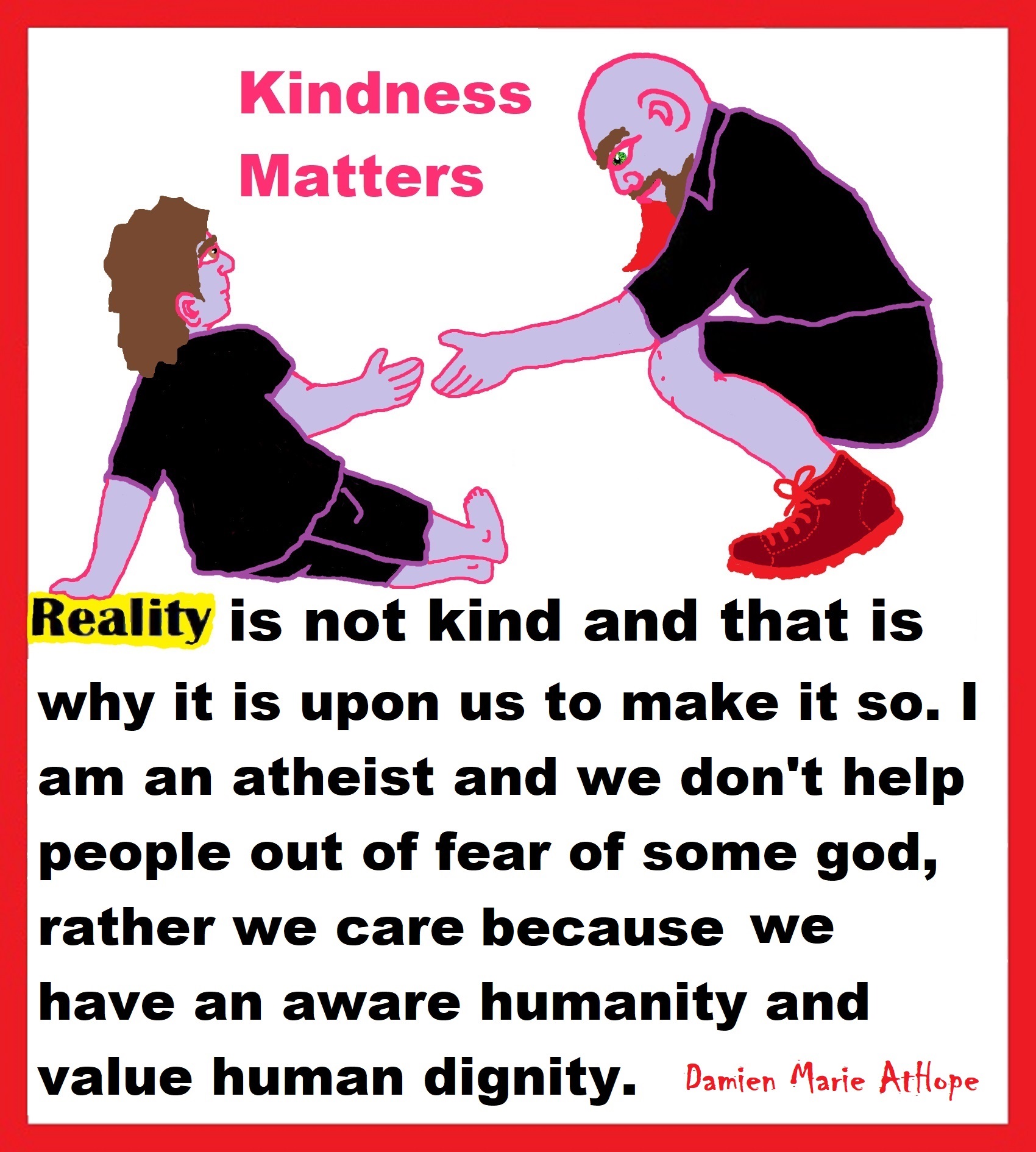
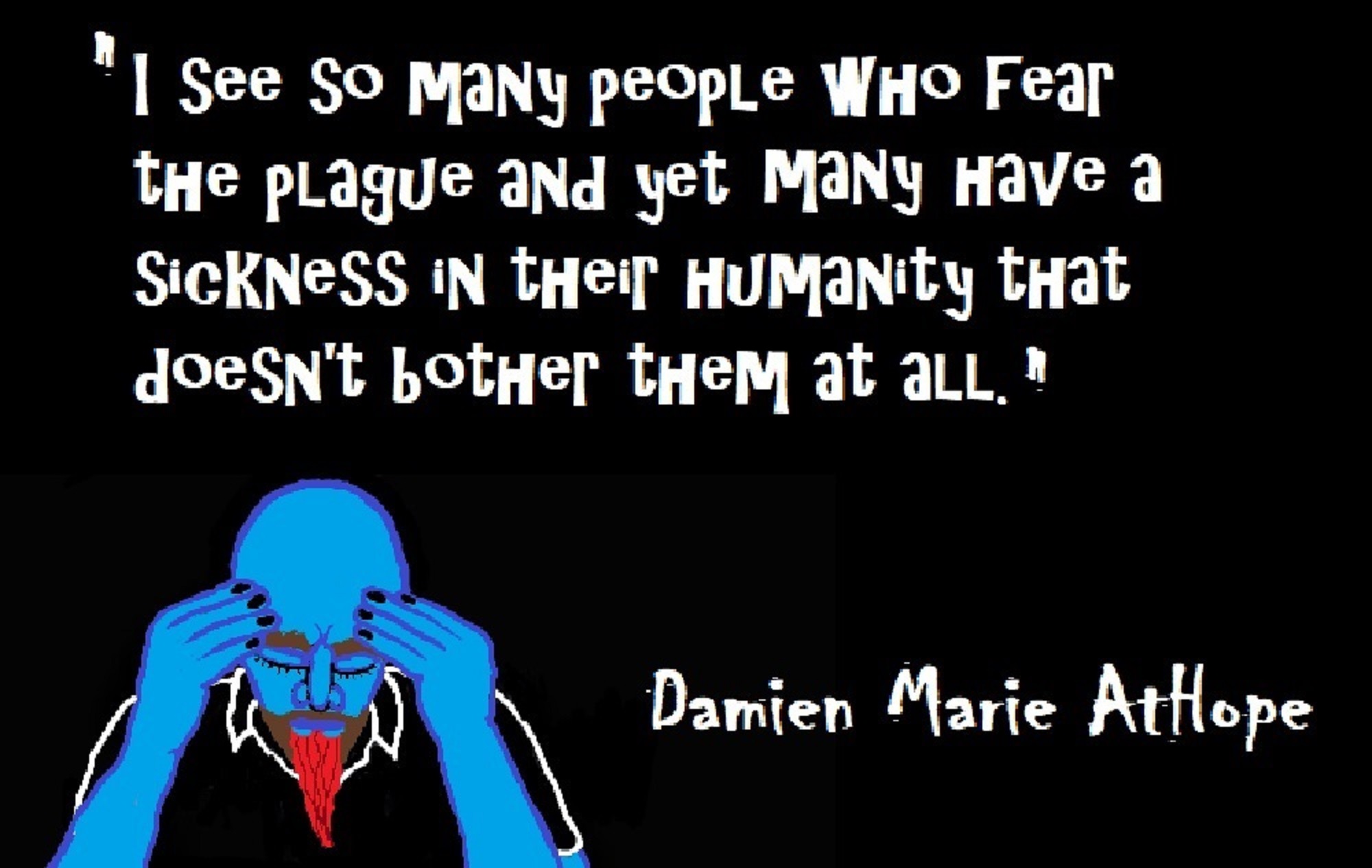
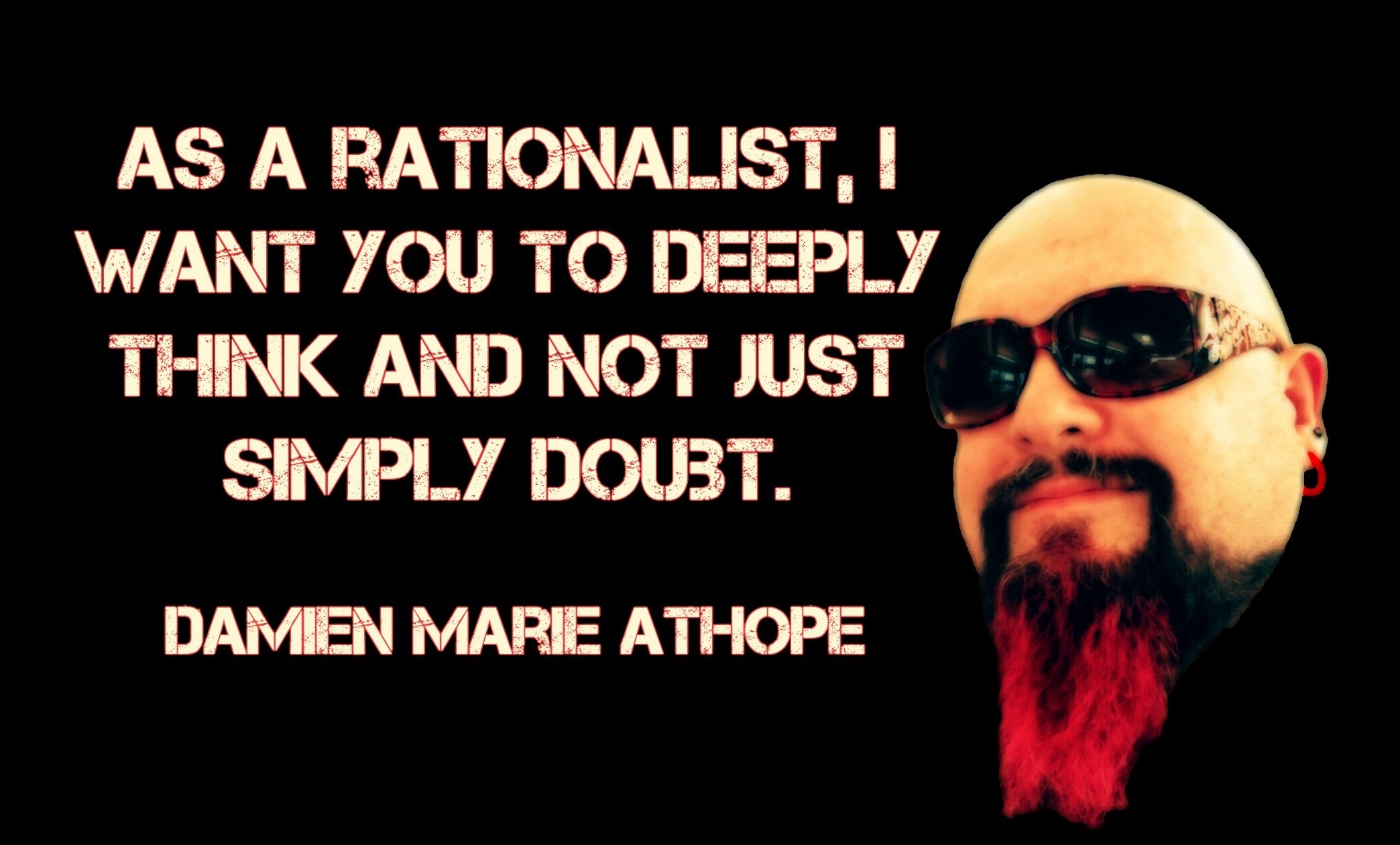


While hallucinogens are associated with shamanism, it is alcohol that is associated with paganism.
The Atheist-Humanist-Leftist Revolutionaries Shows in the prehistory series:
Show two: Pre-animism 300,000 years old and animism 100,000 years old: related to “Anarchism and Socialism”
Show tree: Totemism 50,000 years old: related to “Anarchism and Socialism”
Show four: Shamanism 30,000 years old: related to “Anarchism and Socialism”
Show five: Paganism 12,000 years old: related to “Anarchism and Socialism”
Show six: Emergence of hierarchy, sexism, slavery, and the new male god dominance: Paganism 7,000-5,000 years old: related to “Anarchism and Socialism” (Capitalism) (World War 0) Elite and their slaves!
Prehistory: related to “Anarchism and Socialism” the division of labor, power, rights, and recourses: VIDEO
Pre-animism 300,000 years old and animism 100,000 years old: related to “Anarchism and Socialism”: VIDEO
Totemism 50,000 years old: related to “Anarchism and Socialism”: VIDEO
Shamanism 30,000 years old: related to “Anarchism and Socialism”: VIDEO
Paganism 12,000 years old: related to “Anarchism and Socialism” (Pre-Capitalism): VIDEO
Paganism 7,000-5,000 years old: related to “Anarchism and Socialism” (Capitalism) (World War 0) Elite and their slaves: VIEDO
Paganism 5,000 years old: progressed organized religion and the state: related to “Anarchism and Socialism” (Kings and the Rise of the State): VIEDO
Paganism 4,000 years old: related to “Anarchism and Socialism” (First Moralistic gods, then the Origin time of Monotheism): VIEDO
I do not hate simply because I challenge and expose myths or lies any more than others being thought of as loving simply because of the protection and hiding from challenge their favored myths or lies.
The truth is best championed in the sunlight of challenge.
An archaeologist once said to me “Damien religion and culture are very different”
My response, So are you saying that was always that way, such as would you say Native Americans’ cultures are separate from their religions? And do you think it always was the way you believe?
I had said that religion was a cultural product. That is still how I see it and there are other archaeologists that think close to me as well. Gods too are the myths of cultures that did not understand science or the world around them, seeing magic/supernatural everywhere.
I personally think there is a goddess and not enough evidence to support a male god at Çatalhöyük but if there was both a male and female god and goddess then I know the kind of gods they were like Proto-Indo-European mythology.
This series idea was addressed in, Anarchist Teaching as Free Public Education or Free Education in the Public: VIDEO
Our 12 video series: Organized Oppression: Mesopotamian State Force and the Politics of power (9,000-4,000 years ago), is adapted from: The Complete and Concise History of the Sumerians and Early Bronze Age Mesopotamia (7000-2000 BC): https://www.youtube.com/watch?v=szFjxmY7jQA by “History with Cy“
Show #1: Mesopotamian State Force and the Politics of Power (Samarra, Halaf, Ubaid)
Show #2: Mesopotamian State Force and the Politics of Power
Show #3: Mesopotamian State Force and the Politics of Power (Uruk and the First Cities)
Show #4: Mesopotamian State Force and the Politics of Power (First Kings)
Show #5: Mesopotamian State Force and the Politics of Power (Early Dynastic Period)
Show #6: Mesopotamian State Force and the Politics of Power
Show #7: Mesopotamian State Force and the Politics of Power (Sargon and Akkadian Rule)
Show #9: Mesopotamian State Force and the Politics of Power (Gudea of Lagash and Utu-hegal)
Show #12: Mesopotamian State Force and the Politics of Power (Aftermath and Legacy of Sumer)

The “Atheist-Humanist-Leftist Revolutionaries”
Cory Johnston ☭ Ⓐ Atheist Leftist @Skepticallefty & I (Damien Marie AtHope) @AthopeMarie (my YouTube & related blog) are working jointly in atheist, antitheist, antireligionist, antifascist, anarchist, socialist, and humanist endeavors in our videos together, generally, every other Saturday.
Why Does Power Bring Responsibility?
Think, how often is it the powerless that start wars, oppress others, or commit genocide? So, I guess the question is to us all, to ask, how can power not carry responsibility in a humanity concept? I know I see the deep ethical responsibility that if there is power their must be a humanistic responsibility of ethical and empathic stewardship of that power. Will I be brave enough to be kind? Will I possess enough courage to be compassionate? Will my valor reach its height of empathy? I as everyone, earns our justified respect by our actions, that are good, ethical, just, protecting, and kind. Do I have enough self-respect to put my love for humanity’s flushing, over being brought down by some of its bad actors? May we all be the ones doing good actions in the world, to help human flourishing.
I create the world I want to live in, striving for flourishing. Which is not a place but a positive potential involvement and promotion; a life of humanist goal precision. To master oneself, also means mastering positive prosocial behaviors needed for human flourishing. I may have lost a god myth as an atheist, but I am happy to tell you, my friend, it is exactly because of that, leaving the mental terrorizer, god belief, that I truly regained my connected ethical as well as kind humanity.
Cory and I will talk about prehistory and theism, addressing the relevance to atheism, anarchism, and socialism.
At the same time as the rise of the male god, 7,000 years ago, there was also the very time there was the rise of violence, war, and clans to kingdoms, then empires, then states. It is all connected back to 7,000 years ago, and it moved across the world.
Cory Johnston: https://damienmarieathope.com/2021/04/cory-johnston-mind-of-a-skeptical-leftist/?v=32aec8db952d
The Mind of a Skeptical Leftist (YouTube)
Cory Johnston: Mind of a Skeptical Leftist @Skepticallefty
The Mind of a Skeptical Leftist By Cory Johnston: “Promoting critical thinking, social justice, and left-wing politics by covering current events and talking to a variety of people. Cory Johnston has been thoughtfully talking to people and attempting to promote critical thinking, social justice, and left-wing politics.” http://anchor.fm/skepticalleft
Cory needs our support. We rise by helping each other.
Cory Johnston ☭ Ⓐ @Skepticallefty Evidence-based atheist leftist (he/him) Producer, host, and co-host of 4 podcasts @skeptarchy @skpoliticspod and @AthopeMarie
Damien Marie AtHope (“At Hope”) Axiological Atheist, Anti-theist, Anti-religionist, Secular Humanist. Rationalist, Writer, Artist, Poet, Philosopher, Advocate, Activist, Psychology, and Armchair Archaeology/Anthropology/Historian.
Damien is interested in: Freedom, Liberty, Justice, Equality, Ethics, Humanism, Science, Atheism, Antiteism, Antireligionism, Ignosticism, Left-Libertarianism, Anarchism, Socialism, Mutualism, Axiology, Metaphysics, LGBTQI, Philosophy, Advocacy, Activism, Mental Health, Psychology, Archaeology, Social Work, Sexual Rights, Marriage Rights, Woman’s Rights, Gender Rights, Child Rights, Secular Rights, Race Equality, Ageism/Disability Equality, Etc. And a far-leftist, “Anarcho-Humanist.”
I am not a good fit in the atheist movement that is mostly pro-capitalist, I am anti-capitalist. Mostly pro-skeptic, I am a rationalist not valuing skepticism. Mostly pro-agnostic, I am anti-agnostic. Mostly limited to anti-Abrahamic religions, I am an anti-religionist.
To me, the “male god” seems to have either emerged or become prominent around 7,000 years ago, whereas the now favored monotheism “male god” is more like 4,000 years ago or so. To me, the “female goddess” seems to have either emerged or become prominent around 11,000-10,000 years ago or so, losing the majority of its once prominence around 2,000 years ago due largely to the now favored monotheism “male god” that grow in prominence after 4,000 years ago or so.
My Thought on the Evolution of Gods?
Animal protector deities from old totems/spirit animal beliefs come first to me, 13,000/12,000 years ago, then women as deities 11,000/10,000 years ago, then male gods around 7,000/8,000 years ago. Moralistic gods around 5,000/4,000 years ago, and monotheistic gods around 4,000/3,000 years ago.
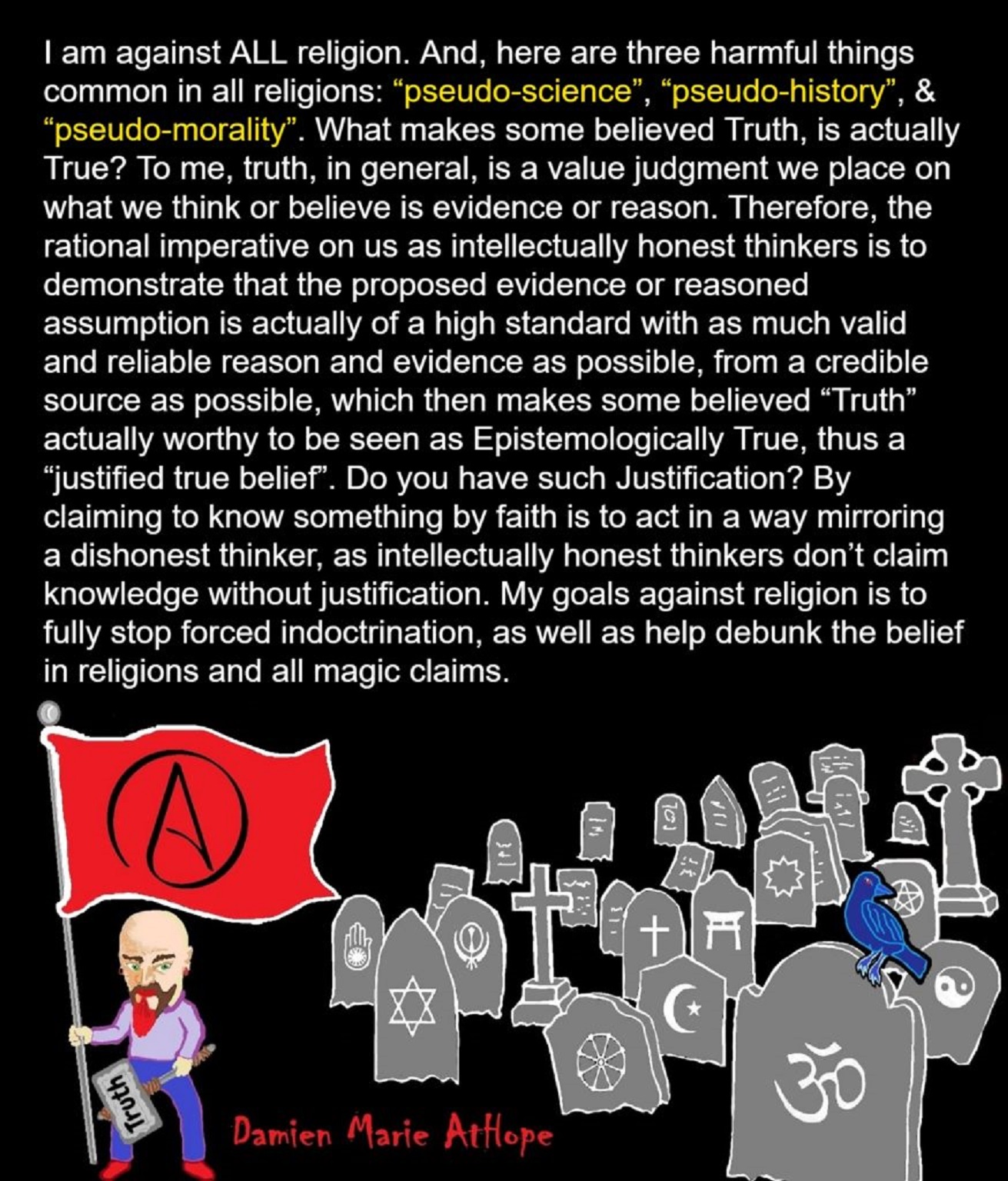

Damien Marie AtHope (Said as “At” “Hope”)/(Autodidact Polymath but not good at math):
Axiological Atheist, Anti-theist, Anti-religionist, Secular Humanist, Rationalist, Writer, Artist, Jeweler, Poet, “autodidact” Philosopher, schooled in Psychology, and “autodidact” Armchair Archaeology/Anthropology/Pre-Historian (Knowledgeable in the range of: 1 million to 5,000/4,000 years ago). I am an anarchist socialist politically. Reasons for or Types of Atheism
My Website, My Blog, & Short-writing or Quotes, My YouTube, Twitter: @AthopeMarie, and My Email: damien.marie.athope@gmail.com

